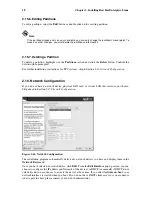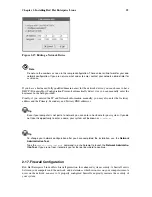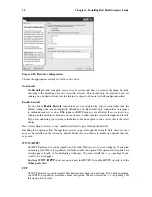
42
Chapter 2. Installing Red Hat Enterprise Linux
For an overview of system administration, refer to the
Red Hat Enterprise Linux Introduction to Sys-
tem Administration
. If you are looking for information on system configuration, you may find the
Red
Hat Enterprise Linux System Administration Guide
to be helpful.
If you are looking for information on securing your system, refer to the
Red Hat Enterprise Linux
Security Guide
.
Do not forget to register for the benefits you are entitled to as a Red Hat customer. Registration enables
access to the Red Hat Services you have purchased, such as technical support and Red Hat Network.
To register your product, go to:
http://www.redhat.com/apps/activate/
2.27. iSeries and pSeries — Rescue Mode
You can use the installation disks in rescue mode, in case your system does not boot. Rescue mode
gives you access to the disk partitions on your system so you can make any changes necessary to
rescue your installation.
To boot in rescue mode, follow the instructions for booting the installation program, with this change:
In the NWSD, set the IPL parameters field to
’rescue’
(including the quotes), or to
’dd rescue’
if you need to load the SCSI driver. On pSeries systems, specify the
rescue
or
dd rescue
(without
quotes) after the default kernel name at the YABOOT prompt.
After the Language Selection screen (Section 2.10
Language Selection
), the installation program at-
tempts to mount the disk partitions on your system. It then presents you with a shell prompt where
you can make the changes you need. These changes may include storing the kernel and command
line into the IPL source, as described in the Installation Complete section (Section 2.26
Installation
Complete
).
When your changes are complete, you can exit the shell using
exit 0
. This causes a reboot from the
C side. To reboot from the A or B side or from *NWSSTG, you should vary off the system instead of
exiting the shell.
2.27.1. Special Considerations for Accessing the SCSI Utilities from Rescue
Mode
If your system uses Native DASD disks, you may need access to the SCSI utilities from rescue mode.
These utilities are located on the driver disc CD. The driver disc CD cannot be mounted from rescue
mode unless special steps are taken. These steps are described below.
If you have a second CD-ROM drive assigned to your Linux system, you can mount the driver disc
CD in the second drive.
If you have only one CD-ROM drive, you must set up an NFS boot, using the following steps:
1.
For iSeries:
Copy
/qopt/red_hat/ppc/iSeries/boot.img
to the IFS of the iSeries system containing
your Linux system. You can do this with a command like:
COPY OBJ (’/qopt/red_hat/ppc/iseries/boot.img’) TODIR(’/tmp’)
Note that
/tmp
can be replaced with any location on your IFS.
For pSeries:
Boot from the CD-ROM with the
linux rescue askmethod
command. This allows you to
manually select NFS as the source of your rescue media instead of defaulting to the CD-ROM
drive.
















































